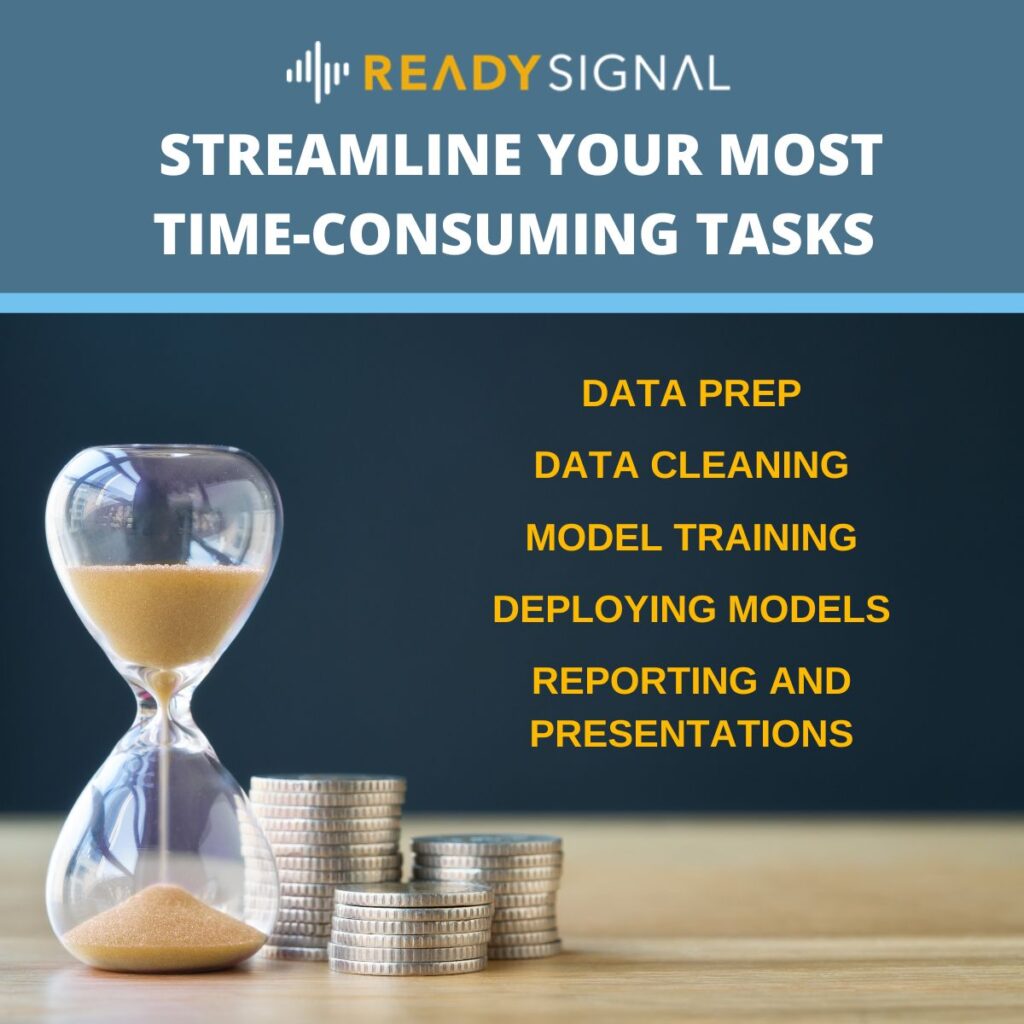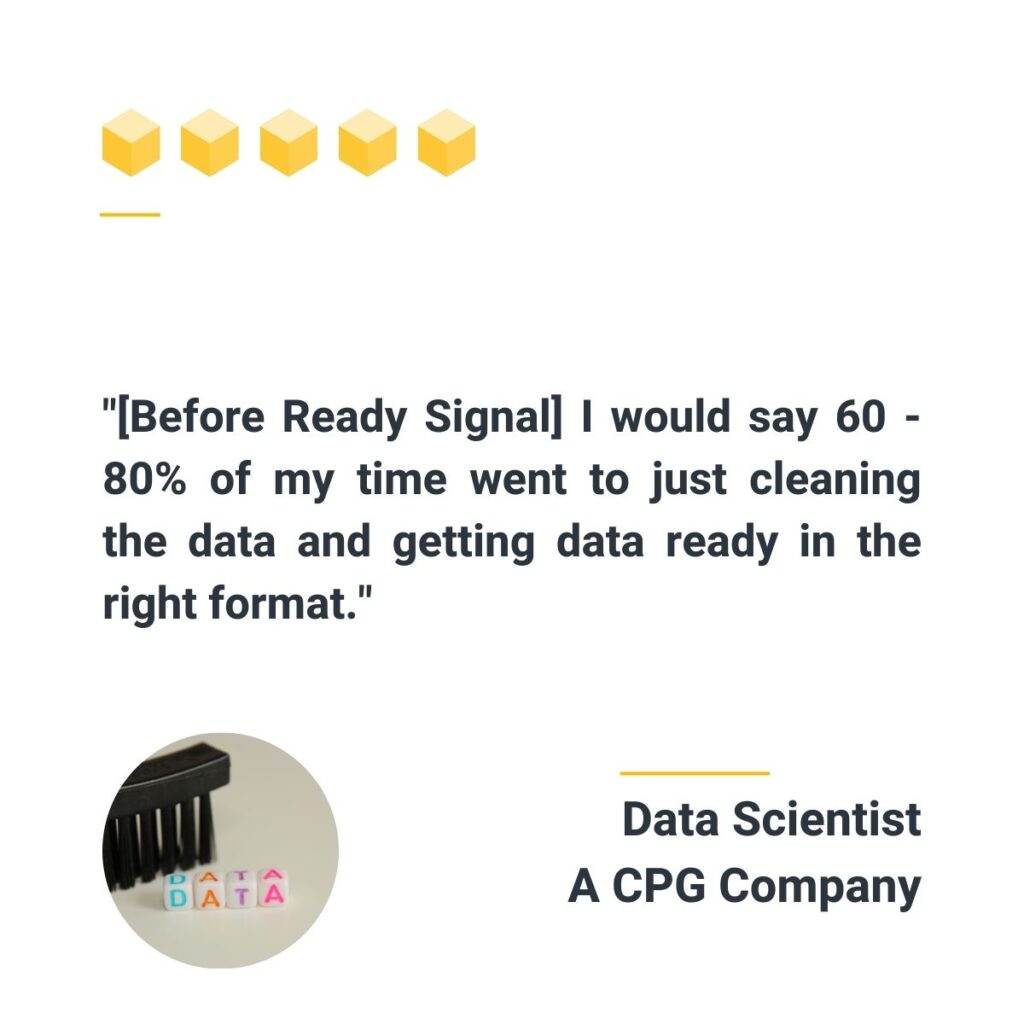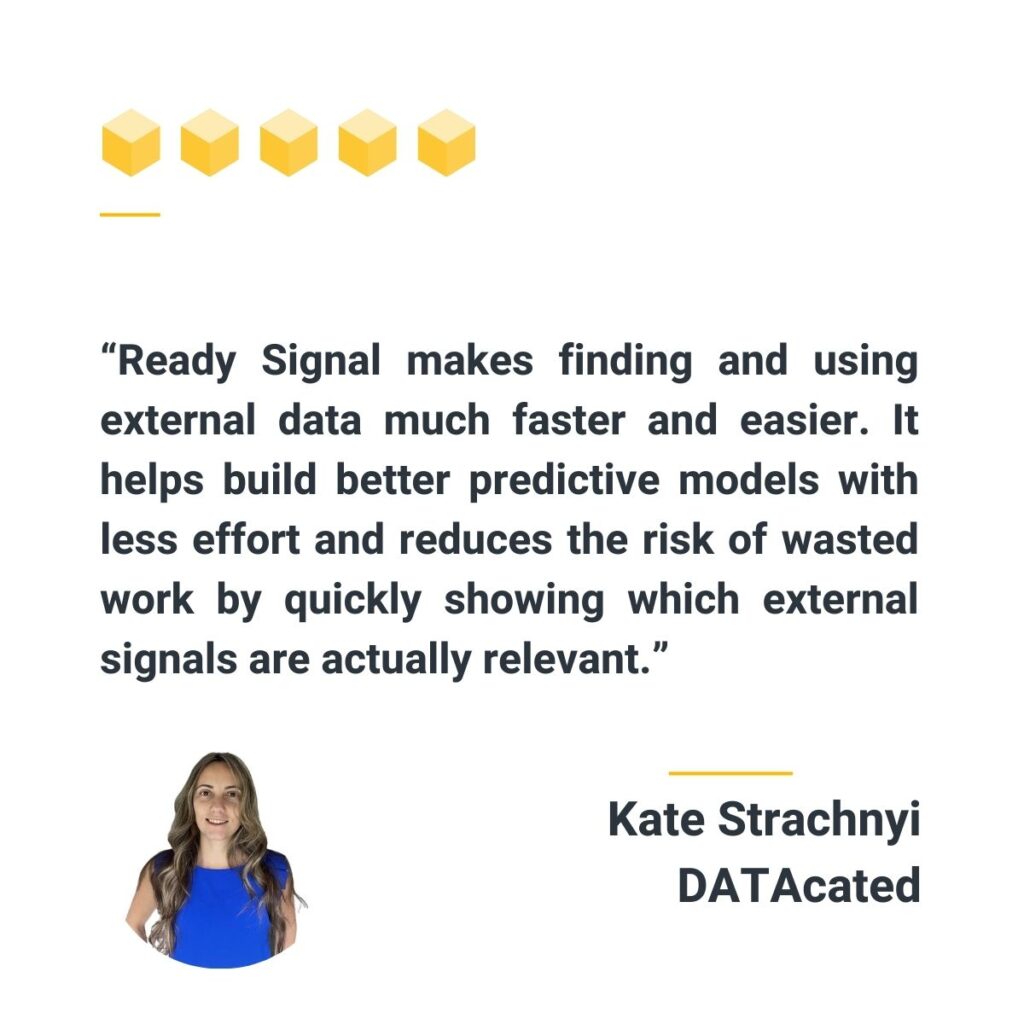Ready Signal’s Automation Can Save Weeks of Effort

The effectiveness of your data pipeline can make or break your organization’s success. At Ready Signal, we recognized the challenge many organizations face: the overwhelming task of aggregating and normalizing data from diverse sources. One user shared with us that some weeks 80% of her time was spent building and managing her data pipeline. This essential process, often requiring significant time and expertise, has traditionally been the responsibility of data scientists. However, as we’ve explored this challenge, we’ve found a powerful solution—automating the tasks that take the most time.
The Challenge: Data Pipelines are Time Consuming
According to the 2021 State of Data Science Report, data scientists spend nearly 40% of their time collecting, cleaning, and organizing data. This staggering statistic highlights a pressing issue within the data landscape. Much of this effort is spent on internal datasets, but the need for external data sources compounds the problem, further straining resources.
Our data scientists often found themselves reinventing the wheel for each project. This repetitive cycle not only hampered productivity but also limited their ability to focus on more strategic initiatives. Recognizing the need for a solution, we set out to automate the aggregation and normalization of data—a pivotal step in streamlining our data pipeline.
The Solution: Automate Your Data Pipeline with Our Aggregated and Normalized External Data
By automating these critical tasks, we aimed to create a more efficient data pipeline that would allow data scientists to reclaim their time and energy. The result? A robust automated feature engineering platform that not only simplifies the data preparation process but also enhances the quality of insights derived from that data.

Key Benefits of Automating Your Data Pipeline
- Increased Efficiency: Automation significantly reduces the time spent on mundane data tasks. By eliminating the need for manual data collection and cleaning, your data scientists can redirect their focus toward analysis and strategic decision-making.
- Improved Accuracy: Manual data handling is prone to human error. By automating the aggregation and normalization process, you enhance the accuracy of your datasets, leading to more reliable insights and decisions.
- Scalability: As your organization grows, so does the volume and variety of data. An automated data pipeline can easily scale to accommodate increasing data demands without the need for additional resources.
- Integration of Diverse Data Sources: With automation, integrating data from multiple sources becomes seamless. This allows you to create a comprehensive view of your data landscape, enhancing analysis and reporting capabilities.
- Fostering Innovation: By freeing up your data scientists from repetitive tasks, you create an environment where innovation can thrive. With more time to explore new methodologies and technologies, your team can drive more impactful projects.
Implementing an Automated Data Pipeline
To realize the benefits of an automated data pipeline, consider the following steps:
- Assess Your Current Processes: Begin by evaluating your existing data aggregation and normalization processes. Identify bottlenecks and areas for improvement.
- Choose the Right Tools: Invest in automation tools and platforms that align with your organization’s needs. Look for solutions that offer robust integration capabilities and support for various data sources.
- Create a Data Governance Framework: Establish clear guidelines for data management, ensuring that data quality and security are prioritized throughout the pipeline.
- Train Your Team: Provide training and resources to your data scientists to help them leverage the new automated processes effectively. This will ensure a smooth transition and maximize the benefits of automation.
- Monitor and Optimize: Continuously monitor the performance of your automated data pipeline. Gather feedback from your data scientists and make adjustments as necessary to enhance efficiency and effectiveness.
Conclusion
Automating data aggregation and normalization is a game-changer for organizations looking to optimize their data pipeline. By alleviating the burdens on data scientists, you enable them to focus on what truly matters—transforming data into actionable insights. At Ready Signal, we are committed to sharing our automated solutions to help organizations harness the full potential of their data. Embrace automation and watch your data pipeline become a powerful asset for your organization.
Curious How it Works? Take a look through our website or get in touch to book a demo!
Get a Free Trial of Ready Signal today and start saving time.


